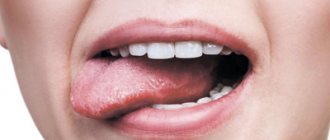What is social phobia and how does it differ from sociopathy? Why is social phobia dangerous and why is it called the disease of lost opportunities? A brief historical excursion into the history of this phenomenon and the fight against it. Prevalence, causes of social phobia, its signs, mental and physiological symptoms. We asked all these questions that concern many people to the Chief Medical Psychiatrist, Psychiatrist-Narcologist and Psychotherapist Vladislav Sipovich.
What is social phobia and how common is it?
Social phobia is one of the most common human phobias (fears). It is found in different categories of the population, in different age groups and actually accompanies humanity from the moment of its emergence and the formation of man as a social being. Hippocrates also described a person with social phobia as not liking light, hiding his eyes under a pulled-down headdress so as not to see or be seen, and also avoiding company for fear of offense, ridicule, or his own inappropriate actions. As Hippocrates argued, such a person feels “that everyone is looking at him.” The term social phobia is literally translated as fear of the general (from Latin Socius and Greek Φόβος). It is an anxiety disorder characterized by exaggerated and irrational fear and anxiety in certain social circumstances. These can be either single episodes or systematic manifestations. The range of situations that provoke fear and anxiety can cover almost any action performed under the supervision of other people. As a result, a person tries to avoid social contacts as much as possible and in severe cases practically becomes a recluse. Communication with real people replaces creativity or the computer. Social phobia is often found among writers, artists, and programmers. Many gambling addicts also suffer from social anxiety.
By the way, there is an opinion among the population that social phobia and sociopathy are the same thing. In fact, these are completely different concepts. Sociopathy is also a mental disorder, but it is manifested by antisocial thoughts and actions. If a social phobe is simply afraid of the opinions of others and is too sensitive about what they think of him, then a sociopath thinks and acts aggressively towards others and can be dangerous to them. A sociophobe rather underestimates himself, while a sociopath overestimates his role, despising and ignoring the opinions of others. In addition, social phobia is absolutely not dangerous for the environment, but significantly worsens the quality of life of the person himself, causing a state of distress and significantly narrowing his ability to achieve successful results in various fields of activity. The prevalence of social phobia has been little studied statistically; figures from different sources vary significantly. Some authors, for example, from the USA, believe that it occurs in every eighth person, others talk about 1-2%, while others claim that it is almost impossible to reliably determine the frequency of occurrence of social phobia. The latter is explained by the fact that only a few social phobics seek professional help. They, as always, are afraid that their complaints will be misjudged, they are afraid of not being taken seriously, and they cannot trust a stranger. Locked in the cocoon of their social isolation, they feel much more comfortable, but the beautiful butterfly is not destined to fly out of it. A person deprives himself of the opportunity to develop professionally and creatively, achieve career heights, adapt socially and find his true place in life. In addition, a social phobe voluntarily gives up many of the joys of life - parties, trips to resorts and travel, going to a restaurant, various entertainment events. Inconveniences arise even when solving ordinary everyday problems and when looking for work, because... The main criterion when choosing vacancies is minimal contact with people, which significantly limits his opportunities.
Distinctive characteristics of social phobia
The main characteristic feature of social phobia is the presence of an obsessive, illogical fear of performing any action in public. Moreover, the manifestations of such fear can be diverse. Some people have a panicky fear of speaking in front of an audience, regardless of the number of outside spectators present. Other representatives, both female and male, are horrified that someone is watching them. Also for many, the fear of leaving the confines of their home, city and finding themselves in an unfamiliar society is a familiar one. Often, those who are susceptible to such a mental disorder are not able to perform any actions at all when they are surrounded by other people and need to be left alone for complete comfort.
Creative people, such as writers and artists, are often susceptible to social phobia. However, the disorder can also affect people engaged in mental work, especially among IT workers. Quite a lot of social phobes can be found among avid gamers who cannot imagine life outside the virtual playground.
Due to the fact that the disease can coexist with other psychotic disorders, it can significantly poison the life of any person, preventing them from solving everyday issues, getting a job and improving their personal life. It can also be dangerous if a depressive disorder is added, against which alcohol dependence .
How and why does social phobia arise, the reasons for a person’s transformation into a modern social ascetic?
As a rule, the causes of social phobia come from childhood. In 50% of social phobias, the symptoms of this disorder appeared before the age of 11, and in 80% - before the age of 20. Childhood and adolescence are characterized by an immature psyche that is in the formative stage. Therefore, any strong stress or experienced feeling of shame can leave its mark for the rest of your life. Psychotraumatic circumstances can subsequently be forced out of memory, having managed to have a negative impact on the child’s psyche. Being in a dormant state, repressed emotions awaken again when a similar situation arises. At the same time, at first, “from old memory,” the vegetative system is activated with pronounced sweating, hyperemia of the skin, trembling of the hands and the whole body, nausea, tachycardia and a feeling of lack of air. The resulting affect of acute shame literally puts the person into a stupor, preventing him from breathing and moving. A person, realizing the causelessness of such a state, cannot resist it and practically loses control over himself. This perverted instinct of self-preservation is used by the “caring” subconscious in order to save the psyche from new shocks. Such an inadequate and unpleasant reaction of the body leads to the fact that a person begins to avoid such situations, and in the worst case, any contact with society. Negative personal attitudes such as “I don’t mean anything”, “no matter what I do, I will always be criticized”, etc. are essential in the emergence of social phobia. Typically, such stereotypes are the result of improper upbringing in the family with a constant unfavorable assessment of not only the child’s behavior, but also the personality of the child, as well as negative personal experiences. As for the neurophysiological basis of social phobias, their connection has been established with a disturbance in the exchange of neurotransmitters, their imbalance and/or deficiency. Hyperexcitability of certain areas of the brain (GM) can also be considered as a physiological cause of social phobia. Such departments are the amygdala, which is responsible for the emotions of fear, as well as the lumbar cortex of the brain, which provides cognitive functions, in particular the response to criticism or reward. Clinical studies have found that social phobia occurs 2-3 times more often in people whose close relatives also suffered from this disorder than in those who did not have cases of social phobia in the family. Observations of twins adopted by different families also confirmed the role of genetics in the development of phobic disorder. So, if one of them exhibited social phobia, then the probability of its occurrence in the second was 30-50% higher than the population average. In addition, the relationship between social anxiety and Parkinson’s disease and schizophrenia, which also have a hereditary factor among the main causes, has been clinically established. Thus, it can be argued that the main factors in the development of social phobia are hereditary predisposition, family and social environment.
Effective methods for getting rid of social phobia
It is possible to completely eliminate the presence of social phobia only with competent action on the main cause of excessive fear. This can be achieved through the practice of cognitive behavioral therapy, which should be carried out in conjunction with carefully selected drug treatment. The clinic’s specialists can choose the right approach to treatment in each individual case. Korsakov, who has impressive experience in successfully helping patients suffering from the harmful manifestations of social phobia. Depending on the situation, doctors may use hypnotherapy using deep immersion. At each stage of treatment, a qualified psychologist works with the patient, encouraging him to talk through the existing problem in order to get rid of it as effectively as possible.
What other mental disorders is social phobia combined with?
It is known that about 65% of social phobias have mental problems, most often they coexist with depressive disorder and various addictions. For example, chronic alcoholism, when trying to overcome their fear of communication and public speaking, patients resort to “emancipation” with the help of alcoholic beverages. In addition, almost 50% of social phobics suffer from benzodiazepine addiction. In addition, some individuals with social phobia engage in various ritualistic behaviors (mental or behavioral) to prevent or reduce negative consequences before upcoming social interactions. Such intrusive thoughts and actions lead to obsessive-compulsive neurosis.
Quite often, social phobia is accompanied by attention deficit hyperactivity disorder. A high degree of comorbidity of social phobia (combination with other pathological conditions) is observed in patients with panic attacks (33%), suicide attempts (23%), and post-traumatic stress disorder (36%). In addition, it was noted that social phobia preceded chronic alcoholism in 75% of patients, panic attacks in 61% and in 90% of patients with depression. There is evidence that social phobia may be associated with bipolar disorder and autism.
Symptoms
The main symptom of social phobia is the presence of stress experienced during public speaking and social interactions. At the same time, we must remember that public speaking can cause a little panic in healthy people, the main thing is that this panic does not seriously interfere with communications and does not occur in every case of communication. In addition, manifestations of social phobia are often confused with introversion, but these are completely different concepts: an introvert has a weak need for communication, while a social phobic may and would like to have more social contacts, but the constant fear of embarrassing himself or not being liked by other people does not allow him to relax, make new contacts.
How to determine that a person is socially phobic, what symptoms of social phobia can you name?
According to the International Classification of Diseases, 10th edition (ICD-10), the main criterion for social phobia is an irrational (illogical) obsessive fear of being the center of attention or performing certain actions in public. At the same time, the patient tries to avoid any situations that cause fear and anxiety, is wary of even entering into professional contact, and thereby deprives himself of the opportunity for career advancement, creative development and making the right fateful decisions. This is why social phobia is often called the disease of lost opportunities.
The symptoms of social phobia can be divided into changes affecting such areas of life as: ● Cognitive functions. ● Behavioral reactions. ● Physiological manifestations. Cognitive impairments in social phobia, the signs and main manifestations of which are associated primarily with thinking, memory and concentration, come down to the following symptoms: ● Reduced ability to concentrate due to constant focus on one’s fear, oneself and one’s behavior. ● Inability to control your emotions and thoughts, a feeling of emptiness in your head due to the lack of constructive thoughts. ● Increased demands on oneself, hyperbolic self-criticism. ● Constant mental replay of situations that are “dangerous” for self-esteem and one’s own behavior at the same time, fantasies about the complete fiasco of one’s intentions. ● Panic fear of criticism and condemnation from the immediate environment, employees, superiors, business partners. ● The desire to always and everywhere appear to be a cultured and exemplary person, to adapt to the opinion of the majority, and to hide one’s personal attitude towards the situation and people. In fact, a social phobe is a person in a case who is most afraid of being thought badly of. ● Constant mental “playing out” of situations, thinking through plans and moves in response to the reaction of the environment. ● Strong feelings after an “alarming” situation, fears about one’s behavior, fear that it looked ridiculous or funny. The emotions experienced during this self-analysis constantly “harass” the social phobic, sometimes even preventing him from falling asleep.
Due to a pathological phobia, a person often behaves awkwardly, inappropriately, says absurd things or is off topic, and comes up with obviously fantastic stories. At the same time, all the external signs of fear are present - arms crossed on the chest, lowered eyes, redness of the face, trembling and unclear speech.
Behavioral symptoms of social phobia: ● A state similar to stupor when being in society. ● Awkwardness, an irresistible desire to hide or run away from communication. ● Inability to look into the eyes of the interlocutor, downcast gaze. ● Irritability and unreasonable tearfulness. ● Frequent mood changes. ● Avoidance of contacts with people, extreme wariness when meeting a new person. Physiological symptoms of social phobia: ● Tremor of the limbs, including the so-called tremors in the knees. ● Chills. ● Motor incoordination, for example, in the form of a gait disorder if a person thinks that he is walking incorrectly or walks past a group of people. ● Hyperhidrosis (excessive sweating). ● Tachycardia (rapid heartbeat). ● Nausea. ● Difficulty and increased breathing, feeling of lack of air. ● Pauresis (inability to urinate and even mention it in front of strangers).
In practice, this means that a person avoids public toilets and is even afraid to ask the driver to stop the bus to empty his bladder. For such people, it is preferable for him to burst than for their reputation. With extreme fear and anxiety, a panic attack may develop, leading to sudden surges in blood pressure, chest pain, numbness of the limbs, and even loss of consciousness. Such a vegetative crisis can last from several minutes to half an hour, and if it occurs constantly, it can result in neurosis and/or depression. In conclusion, I want to say that ordinary shyness and dislike of public appearances are not yet a sign of social phobia; they can simply be character traits formed during upbringing in the family and school. But when the fear of communicating with people and anxiety take on an obsessive form, occupy almost all of a person’s thoughts, interfere with his social adaptation and the implementation of life plans, then we can say that he has social phobia. And what is paradoxical is that inside a social phobe there is often a sociophile who would like social recognition, numerous friends and entertainment. But the sociophobe’s fear of being humiliated and insulted, misunderstood and unrecognized in society prevents him from realizing his desires to be society’s favorite. This is the deep internal conflict between thirst and fear of being seen, which can ultimately lead to serious mental disorder. Is it possible to cope with social phobia on your own or do you need professional help to overcome it? The answers to these questions will be the topic of the next conversation.
Treatment
There are several ways to treat social phobia, and the most important thing here for a person is to admit that he has this disease and accept treatment.
Self-medication, independent overcoming of fears and anxiety of social interactions, as well as periodic conversations with a psychologist can be effective in the early stages.
However, a person with widespread social phobia will most likely benefit from medication treatment and visits to a qualified specialist or psychotherapist for personal or group therapy sessions.
Causes of social phobia
The most common reasons may be:
- attention deficit
- hyperactivity (ADHD),
- psychotraumatic situations that usually extend from childhood.
Having experienced something negative in childhood associated with society, a person may one day experience it again. A negative reaction hidden deep in the subconscious returns and develops into a phobia.
For example, a person experienced shame in childhood, and this was deposited in his memory. He misinterpreted the situation in his youth, so the experience was repressed into his subconscious, and when something similar happened again, he began to develop a fear of society.
Unpleasant feelings are reinforced by stereotypical beliefs . A social phobe convinces himself that he is untalented, that he will not succeed, that he is unlucky and worthless in life, that people will criticize him and begin to judge him anyway. Such beliefs are formed from improper upbringing.
What to do in such a situation? First of all, contact a psychiatrist.
Cognitive-behavioral psychotherapy
Cognitive behavioral therapy (CBT) is a treatment for social phobia that involves changing the way you think, feel, and behave in social situations. The course includes:
- Continuous assessment of a person's level of anxiety in relation to their social phobia.
- Teaching strategies (such as mindfulness) to help manage anxiety symptoms. Encourage the regular use of control methods.
- Behavioral interventions. CBT should focus on gradual exposure to dangerous situations. Cognitive interventions. CBT helps people with social phobia identify and challenge their fears. A person must monitor his thoughts and label his mental distortions during certain situations throughout the day.
- Redistribution of attention. Once the patient has identified and challenged his maladaptive thoughts, he should be encouraged to focus on the present and think realistically about the current situation rather than fearing future outcomes. Mindfulness-based activities can also help you focus on the present
Some people with social anxiety need to learn basic conversational and interpersonal skills and practice them in minimally unfavorable social situations.











